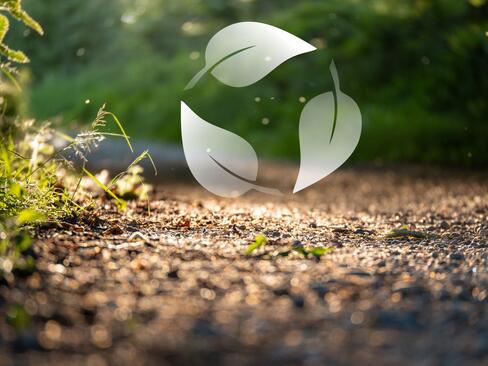Polymer Composites – Polylactic Acid
PLA the Emerging Player in WPC
In the last weeks, we gave a short overview of the well-established WPC market based on polyolefins. In this article, we will focus on the most important biopolymer in the WPC business: Polylactic acid (PLA).
The first question to clarify is the term “biopolymer”. For us, both definition of the word are equally valid, a bio-based raw material and a biodegradable polymer. Although the later one has additional potential in WPCs, more on this later.
PLA-Natural Filler Interaction
As a purely bio-based and biodegradable plastic, PLA is without doubt the bio-polymer for classic plastic applications with the largest commercial interest. Compared to e.g. PP, the composition of PLA polymers and compounds is relatively complex and the interaction with wood or cellulose can differ from grade to grade. For example, many PLA grades show an increase in heat resistance and Young's Modulus (E) if blended with cellulose fillers.
Since there is still a lack of a sufficient compatibilizer (i.e. modified PLA), the amount of natural fibers used in PLA compounds is typically much lower than in PP and mostly notably below 40%. Although, because of the interest from various compounders, it should only be a matter of a short timeframe until compatibilizers are commercially available. Meanwhile the market feedback indicates that cellulose shows a higher compatibility with PLA than wood fillers.

Biodegradability
Even though there are bio-based-PP grades on the market, other bio-based polymers such as PLA (often poorly biodegradable but widely used) and PHA (good biodegradability but other negative aspects) stand out. Nonetheless, both can show sufficient performance and biodegradability. The biodegradability of PLA heavily depends, beside the environmental conditions, on the specific polymer grade. In this aspect, wood or cellulose fillers are promising candidates to increase the biodegradability, by degrading themselves, offering routes into the plastic and increasing the surface area. Note that these fillers do not degrade in the industrially produced PP-WPCs, where they are covered in non-degradable PP.
While PLA is also interesting for its biodegradability, this effect is not favored during the extrusion process. Because of the high temperatures possible during the process and the water content of the renewable fibers, hydrolysis of the PLA polymer can occur. To minimize or neglect hydrolysis, the screw configuration should be adjusted and fibers added over a side feeder at the latest possible point to reduce the dwell time. Favorable configurations, with low dwell time and good de-gassing, are co-rotating twin screw, planetary roller and multi-rotation extruder. Depending on the PLA grade and configuration, pre-drying of the polymer and filler is necessary.









